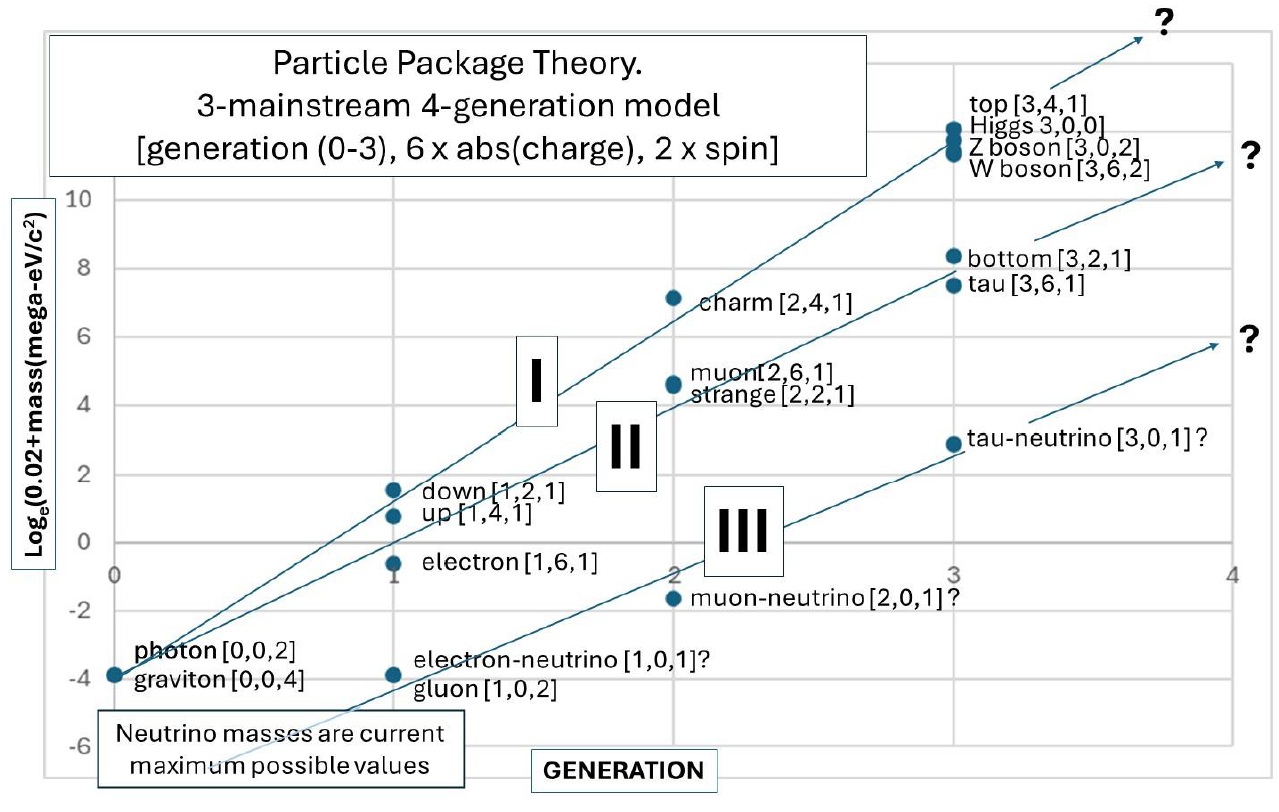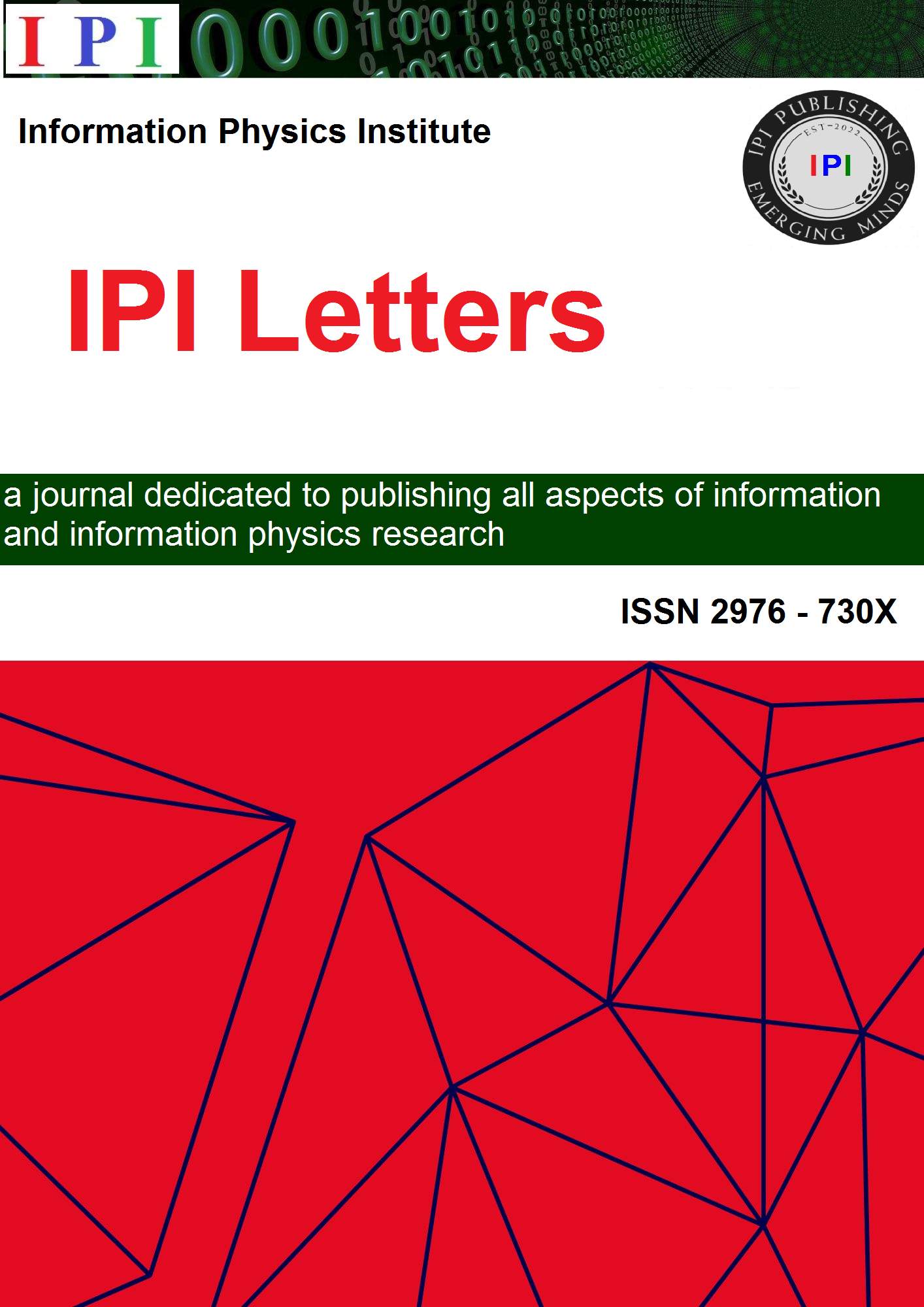Extending the Standard Model through Generation Number Reinterpretation
DOI:
https://doi.org/10.59973/ipil.258Keywords:
Standard model, Generation number, Rest masses, Fermions, BosonsAbstract
It is often stated that there is little obvious relationship between the rest mass energies in the standard model except that mass increases with generation in each one of the particle types, i.e. within the series of quarks, electron leptons and possibly neutrinos considered individually. However, this is misleading. Aclearer, more coherent, pattern emerges when (a) the notion of a generation number is treated as a quantum number divorced from separately considering each series, (b) when the particles are considered as arranged by the rest mass plus a small constant mass in the manner of a loop quantum field correction (with focus on the ”package” that somehow holds the particles of similar mass), and (c) when the logarithms of the mass-energies are plotted in a particular way against the generation number to include the photon, Higgs particle,Wand Z bosons, and a popular form of the conjectured graviton. The fact that the convenient use of log MeV/c2 mass energy is not
dimensionless is discussed. Three mainstreams I, II, III emerge from the clusters; the first two differ in slope and extrapolate to converge persuasively at a generation zero that is tempting to associate with massless spin 0 bosons, notably the photon, generating 11 clusters of mass energies with reasonably tight dispersion. It is suggested that the 4 generations may arise through a phase shift of π/2 related to 4 orthogonal superpositions of spins or bits |0>and |1>comprehensible in terms of axis rotations corresponding to progressive multiplication of the superpositions by imaginary number i. A projected mass energy for mainstream III, primarily the neutrino series, projected to generation zero, lies in the mass domain of axion-like particles (ALPs), still considered good dark matter candidates. The amplitude is more problematic, but, Chester’s pedagogical bead-on-a-circular- wire model provides a plausible explanation in terms of wavenumbers and kinetic energy as mass energy.
References
W.N. Cottingham and D.A. Greenwood, An Introduction to the Standard Model of Particle Physics, Abe Books, (2007).
G. Kane, Modern Elementary Particle Physics, Cambridge University Press, (2017).
J.Iliopoulos and T.N. Tomaras, Elementary Particle Physics: The Standard Theory, (2021).
P.A.M. Dirac, The Principles of Quantum Mechanics, Revised Fourth Edition, (1967).
R. Penrose, The Road to Reality: A Complete Guide to the Laws of the Universe, Jonathan Cape, (2005).
S.D. Bass, A.De Roeck and M.Kado, The Higgs boson implications and prospects for future discoveries, Nature Reviews Physics, 3, 608-624 (2021).
Y.Koide, New view of quark and lepton mass hierarchy, Physical Review D, 28(1), 252-254 (1983).
J.Walters, https://physics.stackexchange.com/questions/562721/why-do-the-masses-of-fundamental-particles-seem-to-increaseexponentially, (2020).
G.K. Zipf, The Unity of Nature, Least-Action, and Natural Social Science, Sociometry, 5(1), 48-62 (1942).
J.Polchinski, String Theory: An Introduction to the Bosonic String, Vol.1, Cambridge Monographs on Mathematical Physics, (2005).
A. Sneppen, Divergent reflections around the photon sphere of a black hole, Scientific Reports, 11, 14247 (2021).
G. Wentzel, Eine Verallgemeinerung der Quantenbedingungen f ¨ ur die Zwecke der Wellenmechanik, Zeitschrift f ¨ur Physik, 38(6-7), 518-529 (1926).
H.A. Kramers, Wellenmechanik und halbzahlige Quantisierung, Zeitschrift f ¨ur Physik, 39(10–11), 828-840 (1926).
L. Brillouin, La m´ecanique ondulatoire de Schr¨odinger: une m´ethode g´en´erale de r´esolution par approximations successives, Comptes Rendus de l’Acad´emie des Sciences, 183, 24-26 (1926).
M. Chester, Primer of Quantum Mechanics, Krieger, (1992).
S. Wimberger, Nonlinear Dynamics and Quantum Chaos: An Introduction, Springer, (2022).
W. Greiner, Relativistic Quantum Mechanics: Wave Equations, Springer Science & Business Media, (2013).
A. Bachelot, On the Klein–Gordon equation near a de Sitter brane, Journal de Math´ematiques Pures et Appliqu´ees, 105(2), 165–197 (2016).

Downloads
Published
How to Cite
Issue
Section
License
Copyright (c) 2025 Barry Robson

This work is licensed under a Creative Commons Attribution 4.0 International License.














